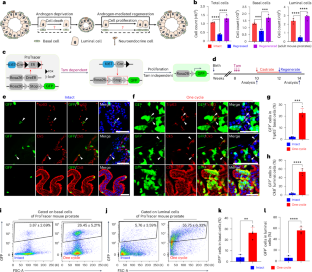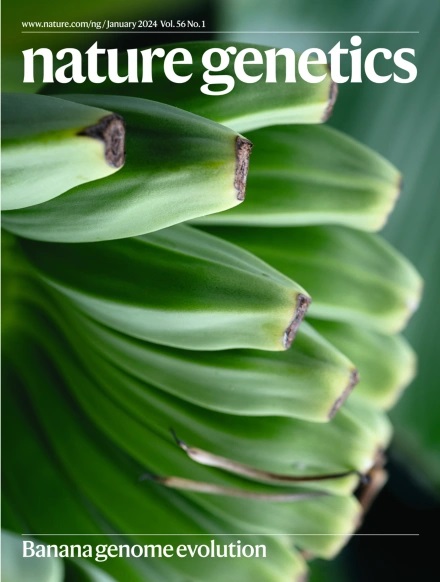JAK/STAT 信号在前列腺基底细胞命运决定过程中维持中间细胞群
IF 31.7
1区 生物学
Q1 GENETICS & HEREDITY
引用次数: 0
摘要
单能基底干细胞和管腔干细胞维持前列腺的稳态,中间细胞群在前列腺炎症或癌症期间出现。然而,基底干细胞和中间细胞群的身份仍不清楚。在这里,我们发现了一个罕见的表达管腔标记的中间细胞群体(称为Basal-B),它具有增强的类器官形成能力,以及一个更大的基底细胞群体(称为Basal-A)。基因谱系追踪显示,在前列腺稳态和雄激素介导的再生过程中,Basal-B细胞代表了一种短暂的基底干细胞状态。在Basal-B细胞中发现了活化的JAK/STAT信号,抑制该信号可显著减少Basal-B标志物的表达。炎症增加了基底-B细胞向腔细胞的转分化,但抑制JAK/STAT可明显减弱这种效应。Pten基因缺失会增加Nkx3.1表达的基底-B样细胞数量并导致肿瘤。在人类良性前列腺增生中,h-Basal-B 细胞更为普遍。这项研究揭示了中间Basal-B细胞的特性,并强调了JAK/STAT信号在前列腺细胞命运决定中的作用。本文章由计算机程序翻译,如有差异,请以英文原文为准。


JAK/STAT signaling maintains an intermediate cell population during prostate basal cell fate determination
Unipotent basal and luminal stem cells maintain prostate homeostasis, with an intermediate cell population emerging during prostate inflammation or cancer. However, the identities of basal stem cell and intermediate cell population remain unclear. Here we identified a rare intermediate cell population expressing luminal markers (termed Basal-B) with enhanced organoid formation capacity, and a larger basal population (termed Basal-A). Genetic lineage tracing revealed Basal-B cells represented a transient basal stem cell state during prostate homeostasis and androgen-mediated regeneration. Activated JAK/STAT signaling was identified in Basal-B cells, and its inhibition significantly reduced Basal-B markers expression. Inflammation increased Basal-B-to-luminal cell transdifferentiation, but JAK/STAT inhibition notably attenuated this effect. Pten gene deletion increased Nkx3.1-expressing Basal-B-like cell population and led to neoplasia. In humans, h-Basal-B cells were more prevalent in benign prostate hyperplasia. This study reveals the identities of intermediate Basal-B cells and underscores the role of JAK/STAT signaling in prostate cell fate determination. This study identifies Basal-B cells as a transient cell state during prostate homeostasis and androgen-mediated regeneration. These cells exist in humans and increase in number with prostatitis and inflammation.
求助全文
通过发布文献求助,成功后即可免费获取论文全文。
去求助
来源期刊

Nature genetics
生物-遗传学
CiteScore
43.00
自引率
2.60%
发文量
241
审稿时长
3 months
期刊介绍:
Nature Genetics publishes the very highest quality research in genetics. It encompasses genetic and functional genomic studies on human and plant traits and on other model organisms. Current emphasis is on the genetic basis for common and complex diseases and on the functional mechanism, architecture and evolution of gene networks, studied by experimental perturbation.
Integrative genetic topics comprise, but are not limited to:
-Genes in the pathology of human disease
-Molecular analysis of simple and complex genetic traits
-Cancer genetics
-Agricultural genomics
-Developmental genetics
-Regulatory variation in gene expression
-Strategies and technologies for extracting function from genomic data
-Pharmacological genomics
-Genome evolution
 求助内容:
求助内容: 应助结果提醒方式:
应助结果提醒方式:


